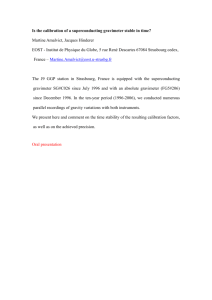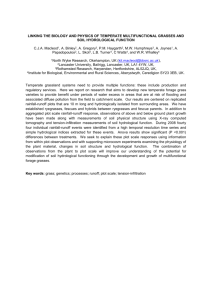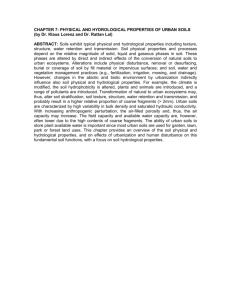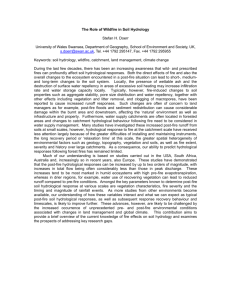Towards physical modeling of local-scale hydrological contribution
advertisement
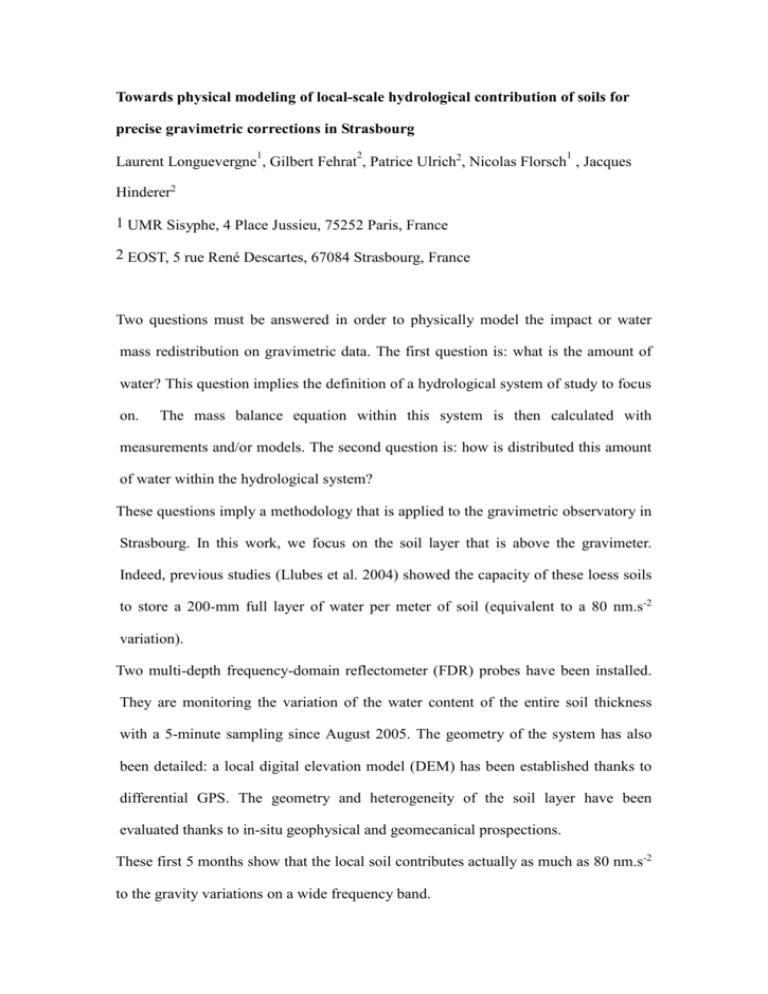
Towards physical modeling of local-scale hydrological contribution of soils for precise gravimetric corrections in Strasbourg 1 2 1 Laurent Longuevergne , Gilbert Fehrat , Patrice Ulrich2, Nicolas Florsch , Jacques Hinderer2 1 UMR Sisyphe, 4 Place Jussieu, 75252 Paris, France 2 EOST, 5 rue René Descartes, 67084 Strasbourg, France Two questions must be answered in order to physically model the impact or water mass redistribution on gravimetric data. The first question is: what is the amount of water? This question implies the definition of a hydrological system of study to focus on. The mass balance equation within this system is then calculated with measurements and/or models. The second question is: how is distributed this amount of water within the hydrological system? These questions imply a methodology that is applied to the gravimetric observatory in Strasbourg. In this work, we focus on the soil layer that is above the gravimeter. Indeed, previous studies (Llubes et al. 2004) showed the capacity of these loess soils to store a 200-mm full layer of water per meter of soil (equivalent to a 80 nm.s-2 variation). Two multi-depth frequency-domain reflectometer (FDR) probes have been installed. They are monitoring the variation of the water content of the entire soil thickness with a 5-minute sampling since August 2005. The geometry of the system has also been detailed: a local digital elevation model (DEM) has been established thanks to differential GPS. The geometry and heterogeneity of the soil layer have been evaluated thanks to in-situ geophysical and geomecanical prospections. These first 5 months show that the local soil contributes actually as much as 80 nm.s-2 to the gravity variations on a wide frequency band.



